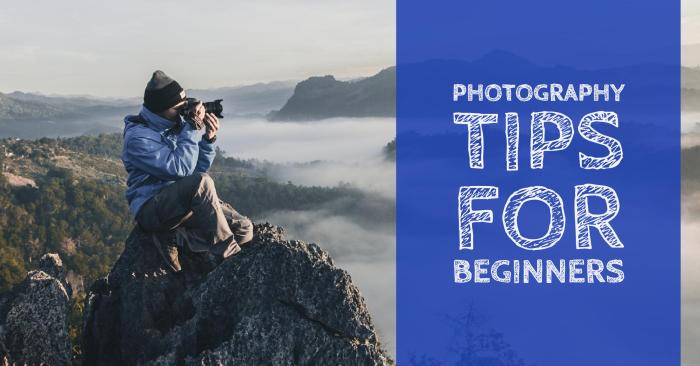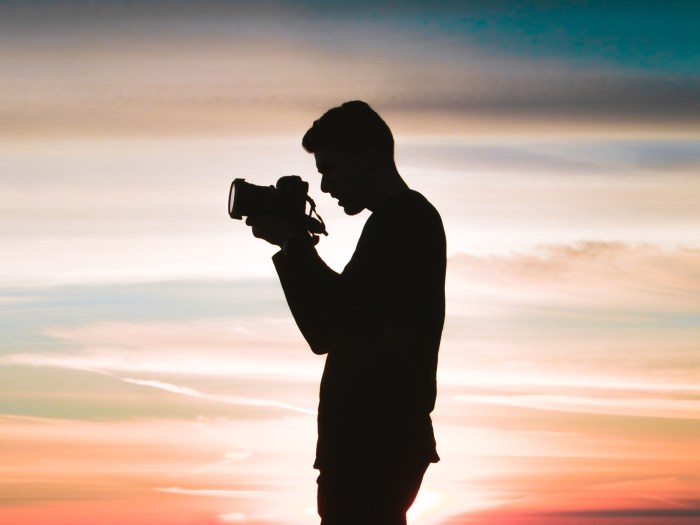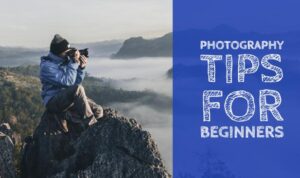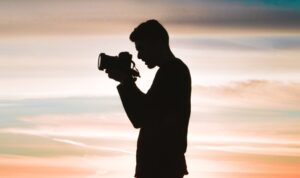Photography Tips for Beginners takes center stage with a fresh perspective on capturing stunning images that will make you stand out from the crowd. Get ready to dive into the world of photography and unleash your creative potential!
Introduction to Photography Tips for Beginners
Photography tips are crucial for beginners as they provide guidance on how to improve their skills, learn new techniques, and enhance their overall photography experience. By following these tips, beginners can avoid common mistakes, gain confidence, and progress faster in their photography journey.
Benefits of following Photography Tips for Beginners
- Enhance skills and techniques
- Avoid common mistakes
- Gain confidence
- Progress faster in photography journey
Overview of what will be covered in the article
In this article, we will cover essential photography tips for beginners, including understanding camera settings, composition techniques, lighting tips, editing basics, and more. By following these tips, beginners can take their photography to the next level and capture stunning images.
Choosing the Right Camera

When starting out in photography, selecting the right camera is crucial to your success as a beginner. The camera you choose will greatly impact the quality of your photos and your overall experience. Here are some tips to help you make the best choice within your budget.
Different Types of Cameras
- DSLR Cameras: Known for their versatility and image quality, DSLR cameras allow you to change lenses and have manual controls for customization.
- Mirrorless Cameras: These cameras are compact and lightweight, offering high-quality images and interchangeable lenses without the bulk of a DSLR.
- Point-and-Shoot Cameras: Perfect for beginners, point-and-shoot cameras are easy to use and compact, with fixed lenses and automatic settings.
Comparing Features
- Resolution: Look for cameras with higher megapixels for better image quality, especially if you plan to print your photos.
- Zoom Capabilities: Consider the optical zoom range of the camera for capturing subjects at a distance without losing image quality.
- Ease of Use: Opt for a camera with intuitive controls and menus that are beginner-friendly to help you learn the basics quickly.
Tips for Selecting the Best Camera
- Set a Budget: Determine how much you are willing to spend and stick to it to avoid overspending on features you may not need as a beginner.
- Research: Read reviews, watch tutorials, and visit stores to test different cameras before making a decision.
- Consider Future Needs: Think about your long-term photography goals and choose a camera that can grow with you as you improve your skills.
Understanding Basic Camera Settings
Understanding basic camera settings is essential for beginner photographers to capture the best possible images. Settings like aperture, shutter speed, and ISO play a crucial role in determining the outcome of your photos. By mastering these settings, you can have more control over your images and unleash your creativity.
Adjusting Aperture, Shutter Speed, and ISO for Different Lighting Conditions
When shooting in different lighting conditions, it’s important to adjust your camera settings accordingly to achieve the desired results. Here are some tips on how to adjust aperture, shutter speed, and ISO for various lighting situations:
- For low light conditions, such as indoors or at night, you can open up your aperture (use a lower f-stop number) to allow more light to enter the camera.
- When shooting fast-moving subjects or in bright light, you can increase your shutter speed to freeze motion and avoid overexposure.
- Adjusting the ISO setting can help you control the sensitivity of your camera’s sensor to light. Higher ISO values are useful in low light situations, but they can introduce noise to your images.
Remember, the key is to find the right balance between aperture, shutter speed, and ISO for each specific shooting scenario.
Impact of Changing Camera Settings on Final Image
Changing camera settings can dramatically affect the final outcome of your images. Let’s look at some examples of how adjusting aperture, shutter speed, and ISO can make a difference:
- Increasing the aperture (using a higher f-stop number) can create a greater depth of field, resulting in more background details being in focus.
- Slowing down the shutter speed can introduce motion blur to your photos, which can add a sense of movement to static subjects.
- Raising the ISO too high can lead to grainy or noisy images, so it’s important to find the optimal balance between ISO and light conditions.
Composition Techniques: Photography Tips For Beginners
When it comes to photography, composition plays a crucial role in creating visually appealing and impactful images. Understanding composition techniques can help beginners take their photos to the next level.
The rule of thirds is a fundamental composition rule that involves dividing your frame into a 3×3 grid and placing your subject along the gridlines or at the intersection points. This technique helps create balance and interest in your photos.
Leading Lines
- Leading lines are elements within a photo that lead the viewer’s eye towards the main subject.
- Examples of leading lines include roads, fences, or even shadows that guide the viewer’s gaze through the image.
- Use leading lines to create depth and draw attention to your subject.
Framing
- Framing involves using elements in the foreground to frame your main subject and draw attention to it.
- Examples of framing include doorways, windows, or tree branches that act as a natural frame within the photo.
- Experiment with different framing techniques to add visual interest to your compositions.
Symmetry, Photography Tips for Beginners
- Symmetry in photography involves creating balanced and harmonious compositions by mirroring elements on either side of the frame.
- Look for symmetry in architecture, nature, or everyday objects to create visually striking images.
- Play with symmetrical compositions to add a sense of order and beauty to your photos.
Lighting Tips for Beginners

When it comes to photography, lighting plays a crucial role in capturing the perfect shot. Whether you’re using natural light or artificial light, understanding how to manipulate light can make a significant difference in the quality of your photos.
Significance of Natural Light and Artificial Light
Natural light is often considered the best type of light for photography as it provides a soft and flattering illumination. It’s essential to pay attention to the direction and intensity of natural light when shooting outdoors. On the other hand, artificial light sources like flash or studio lights give you more control over the lighting conditions, allowing you to create a specific mood or atmosphere in your photos.
Using Light to Enhance Mood and Atmosphere
- Experiment with different light angles to create shadows and highlights for a dramatic effect.
- Use backlighting to add depth and dimension to your subjects.
- Adjust the white balance settings on your camera to achieve the desired color temperature for the scene.
- Consider using diffusers or reflectors to soften harsh light or fill in shadows.
Dealing with Challenging Lighting Situations
- When shooting in harsh sunlight, look for shaded areas or use a diffuser to soften the light.
- For low-light situations, increase your camera’s ISO setting or use a tripod to avoid camera shake.
- Experiment with long exposure techniques for capturing light trails or night scenes.
- Consider using HDR (High Dynamic Range) photography to balance out extreme lighting conditions in your photos.
Editing Basics
Editing plays a crucial role in photography as it allows photographers to enhance their images, correct imperfections, and bring their creative vision to life. Understanding the basics of editing is essential for beginners looking to improve their photography skills.
Popular Editing Software for Beginners
- Adobe Lightroom: A user-friendly software with powerful editing tools for adjusting exposure, color, and tone. It also offers presets for quick edits.
- Adobe Photoshop: A more advanced editing software that allows for detailed retouching, compositing, and creative effects. It has a steeper learning curve but offers endless possibilities.
- GIMP: A free and open-source alternative to Photoshop, offering similar features like layers, masks, and filters. Great for beginners on a budget.
Basic Editing Techniques
- Cropping: Adjusting the composition of an image by removing unwanted elements or improving the overall balance.
- Exposure Adjustment: Tweaking the brightness and contrast of an image to enhance details and colors.
- Color Correction: Balancing colors, correcting white balance, and enhancing saturation to achieve a more pleasing look.
Tips for Improving Photography Skills
Photography is a skill that requires practice and continuous learning in order to improve. Here are some tips to help beginners enhance their photography skills.
Exercises and Challenges
- Practice shooting in different lighting conditions to understand how it affects your photos.
- Challenge yourself to take photos of the same subject from various angles and perspectives.
- Experiment with different compositions, such as the rule of thirds or leading lines.
Importance of Experimentation
It’s essential to experiment with your photography to discover what works best for you. Don’t be afraid to try new techniques and styles, as this is how you’ll grow as a photographer.
Learning from Mistakes
Don’t get discouraged by mistakes; instead, use them as learning opportunities. Analyze your photos to understand what went wrong and how you can improve in the future.
Resources for Further Learning
- Take online photography courses to expand your knowledge and skills.
- Read books on photography techniques and concepts to deepen your understanding.
- Join photography communities or forums to connect with other photographers and gain inspiration.








